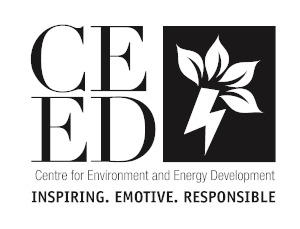Shweta Chaudhary |
We often hear the call to “protect the environment,” but what does that really mean? At first glance, it might sound like we’re focused on saving nature itself. However, the reality is that efforts to address climate change are often about protecting our place within the environment, not just the environment itself. Nature is incredibly resilient, and history shows that it has endured mass extinctions, climate upheavals, and significant changes long before humans arrived. In fact, it doesn’t need humanity to heal; we, on the other hand, require a stable environment to survive.
In the words of Ban Ki-Moon, former UN Secretary General “Climate change threatens our ability to achieve sustainable development, and in some cases, our very survival.” Environmental policies and climate actions play a crucial in protecting the environment and reducing the impact of climate change ensuring a livable world for current and future generations. The role of international frameworks and climate initiatives like the Conference of the Parties (COP), climate funds, international agreements and national climate policies is increasingly recognized as central to these efforts. But are these efforts truly translating to what we want to achieve? Is mere survival enough? Or we need to create a world that is just, dignified, and equitable and puts people at the core of decision-making and action on climate change. Who truly benefits from these efforts and whether they are achieving meaningful change for everyone. Around 700 million people approximately 8.5% of the global population, live in extreme poverty, surviving on less than $2.15 per day. 3.5 billion people (44 percent of the global population) remain poor by a standard that is more relevant for upper middle-income countries ($6.85 per day). Meanwhile, climate change has left 1.2 billion people at the extreme risk. Additionally climate change impacts will make 130 million people fall in poverty by 2030. While wealthier nations and large corporations often have the resources to adapt, innovate, and ensure resilience, it’s the common people, particularly those in poorer nations and marginalized communities, who continue to face the brunt of climate change without adequate support.
Many people in low-income countries face food insecurity, water scarcity, health risks t due to climate crises but lack the financial resources to adapt or recover swiftly. About 80% of people at the risk of crop failure and huger due to climate change are in Sub Saharan Africa, South Asia and South East Asia. For these communities, environmental protection is not a luxury or a long-term strategy but an urgent, day-to-day need. Nearly 300 million will require humanitarian aid in 2024 due to climate crises, and other emergencies.
Climate initiatives must ensure that vulnerable communities directly benefit from climate investments and that they have a voice in shaping policies affecting them. Climate funds, must prioritize the communities facing the most severe impacts of climate change, including extreme weather, rising seas, and resource shortages. Without an inclusive approach, existing inequalities may deepen, leaving millions further behind.
Ultimately, protecting the environment means protecting all people, particularly those most vulnerable to climate risks. Climate negotiations must extend beyond abstract goals and translate into tangible, equitable support for those who need it most. A truly effective approach to climate action recognizes that if we are to secure humanity’s future, our focus must be on building a just, inclusive, and sustainable world that benefits everyone, not just those with resources and power.


